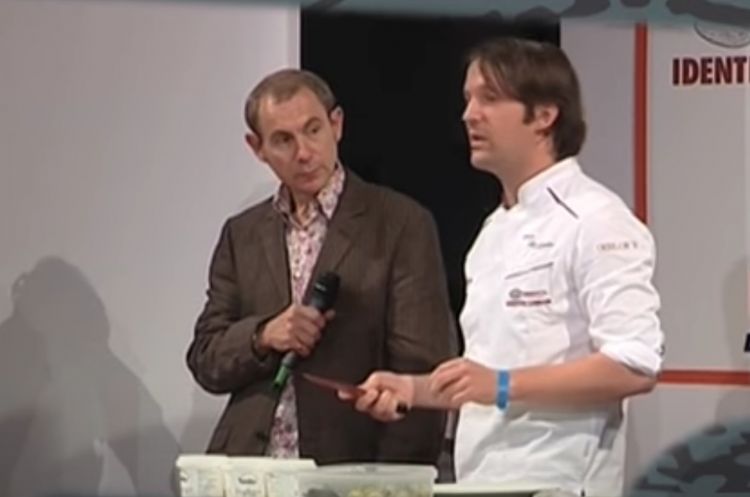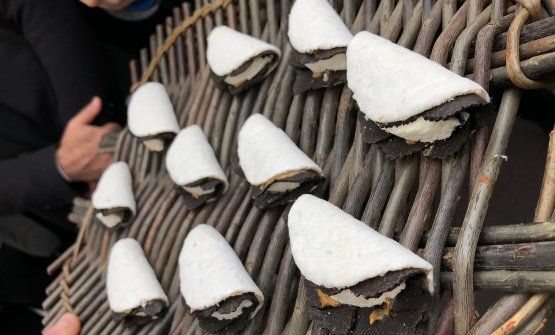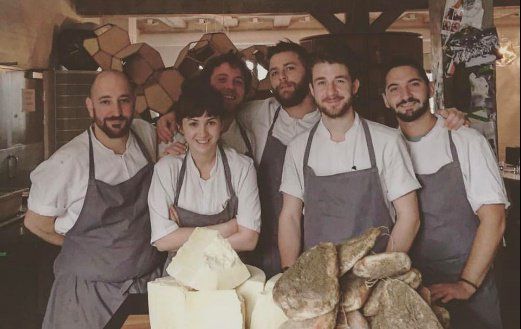Noma is once again at the top of the 50Best. It's the fifth time ever, but the first for the new location on the edge of Christianshavn, after the glories of Strandgade, the old salt warehouse that was already at number one in 2010-2012 and in 2014. Not a late acknowledgement, as in the case of the 3 Michelin stars but, if anything, a seal of approval for the most influential restaurant of the decade, a sceptre inherited from Ferran and Albert Adrià's el Bulli, which closed exactly 10 years ago (and was also awarded by the 50Best in 2002 and 2006-2009).
There's no doubt that the establishment in Copenhagen is somewhat the heir of the Catalan one, and of the revolution that the latter created on the turn of the millennium. After his fundamental experience in Cala Monjoi, René Redzepi returned with two ideas that are still crucial in his restaurant format. The first is that of a lab as the necessary waiting room before entering the restaurant: the Test Kitchen is to Noma what Taller was for el Bulli, a place of work and discussion where the frontiers of technique and raw materials are moved forward. A think tank in which to discuss the physical, chemical and biological nature of food and taste, giving gastronomy a scientific dignity that was unknown for centuries.

Rene Redzepi on the stage of Identità London, in 2009. The year before he had been nominated International Chef of the Year for the Guida di Identità Golose
The second important model that the Danish restaurant derived from the Catalan one was the single tasting menu, a journey no longer divided into three courses (starter – main course – dessert), like the French did for a century in fine dining, but with many more facets, and rhythmed by a greater number of courses. It's the expression of the chefs' desire for power, finally leaving the shade of the kitchen, proud to show off all their knowledge which is the result of the work of all the producers that express a place, a community, a specific area. An offer that clients welcome happily, with no complaints.
But while the relationship of inheritance between
Redzepi and
Adrià is clear, the same applies to the steps taken by the pupil of Macedonian heritage to keep a distance from his master. First of all, René is a person who urged cooks to leave the laboratory through foraging, the daily exercise of picking wild herbs, mushrooms or wild vegetables from the surroundings. A custom as old as people which over the last decade has acquired a forgotten appeal. And now armies of aprons are bent in two, picking leaves in the fields.

Mould Sandwiches served at Noma before the pandemic: "Fermentations", Redzepi told us, "are the cuisine of the future "
But speaking only of foraging would be like not seeing the wood for the trees. Because the Redzepi's greatest merit was to widen the edible vocabulary, and the technical repertoire of a country that hadn't shown any gastronomic pride or attention to its own culinary tradition. It all starts with the famous myth of the origins of
Noma, when the cook, together with his previous business partner
Claus Meyer, went in search of a Nordic identity, trying to find it in the ravines of a macrocosm that cannot be limited to Denmark – a region that is smaller than Lombardy and Veneto put together – but must necessarily be extended to Norway and Sweden, Finland and the Baltic Republics, Scotland and Far Oer.
These are the first bricks of the Nordic pride, a home that for the first time moves the centre of gravity of creativity in the kitchen from the Mediterranean basin to Scandinavia. A movement that spurs from a renewed sense of aesthetic: more intuitive (at least in the early days), in which all the cousins can recognise themselves. But also with a sense of superiority compared to rigid classic necrotised models: the impossibility of communication between savoury cuisine and pastry making (at
Noma desserts are not a break, but a continuum with the previous dishes), the linen tableware touching the ground (tables are bare), the rigid separation between cooks and waiters (Redzepi was the first to bring chefs into the dining room).
A lay approach that draws raw materials inspired by geographically distant traditions but, why not, adaptable to their latitude: koji seaweeds like in Japan, ants like in the Amazon but also sea urchins, for many years not popular in Danish cuisine, the way they were used by South Europeans. Local raw materials and a free mind to carve in it (cooking and preserving) techniques from all around the world. Here and there, shocking conformists by serving swan garum, fluorescent lumpfish, reindeer penises, mushrooms as large as fans, ducks served with their beak…

A small part of the Italian cooks who have passed through Noma: left to right, Luca Armellino, Jessica Natali, Edoardo Fiaschi, Riccardo Canella, Stefano Ferraro
A collection of ideas of which the entire city profited: even after the pandemic, Copenhagen is likely to return to be what Barcelona was 15 years ago, the European capital of creativity. A school that not only has bestowed glory, ideas and Michelin stars to Danish or Nordic restaurants (
Maeemo in Oslo,
Amass and
Geranium in Copenhagen,
Koks in the Far Oer,
Björn Frantzén in Stockholm and many more that would not exist if not thanks to
Redzepi's example) but has also made a clear impact well beyond the home borders: from Bolivia to Australia, from Brazil to Russia, from Thailand to Italy (the latter, an important basin of cooks that have made a decisive contribution to its success).
"New" cuisines from very distant countries that have interpreted, each one in its own way, the great lesson of Rene Redzepi: «If I can cook good food here, it can happen everywhere». After the pandemic, however, what counts the most is what comes before the kitchen: sustainability in terms of employees, finances, ingredients used. The features of the most influential restaurant of the decade to come.
Translated into English by Slawka G. Scarso